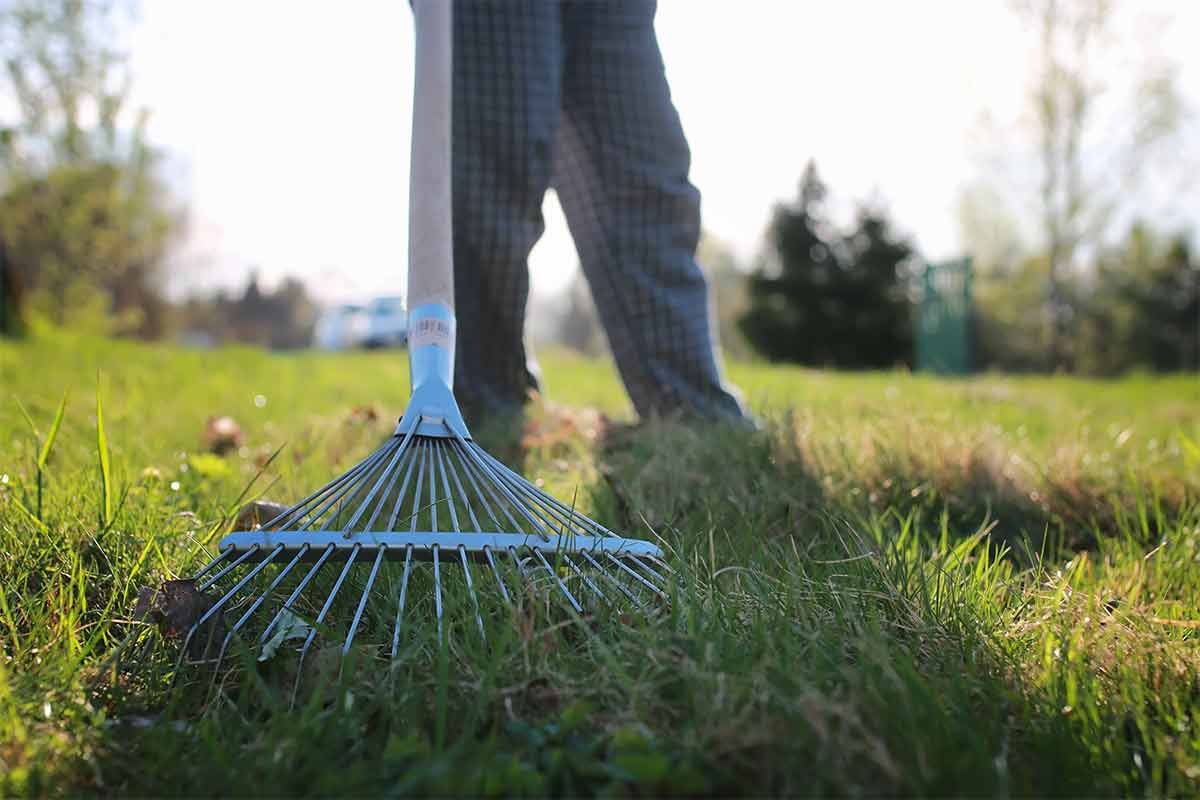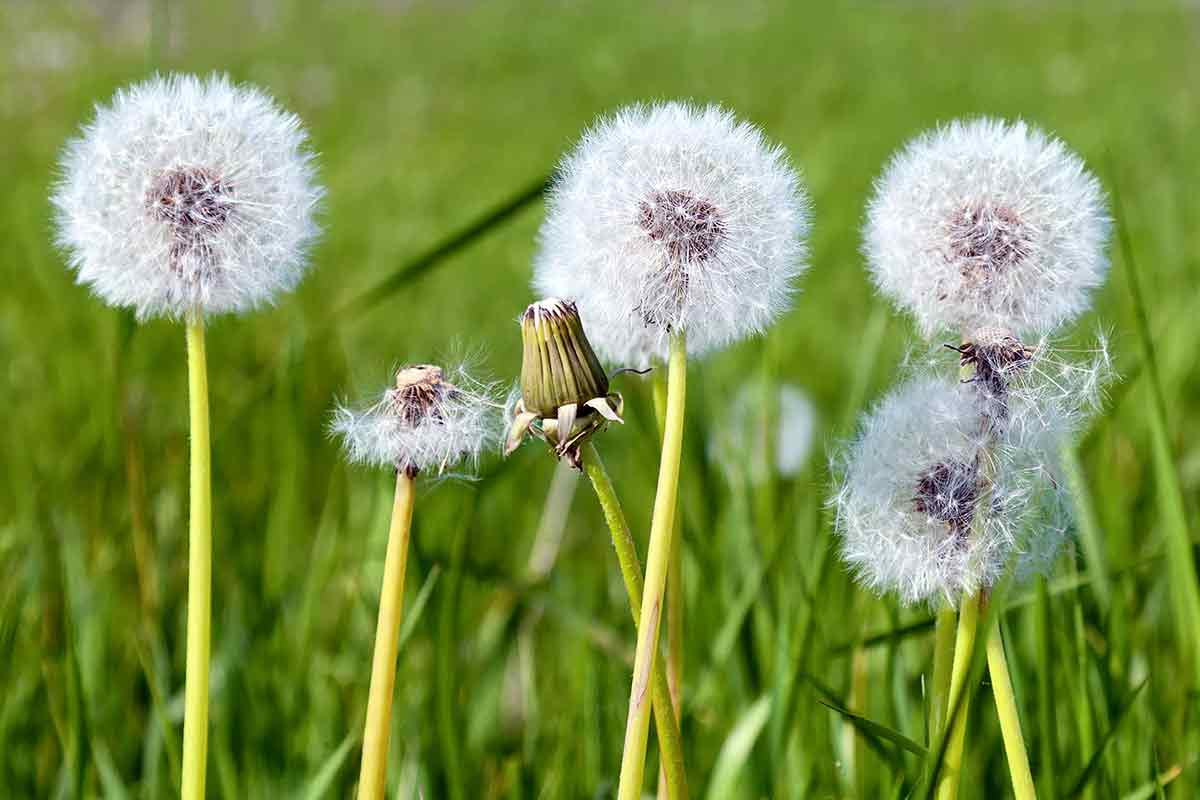Quality matters when hiring for a big project. Call a Best Pick now!
The first official day of spring, March 20, is only a couple weeks away, and here in Georgia the Bradford pears have already begun to bloom. Much to allergy sufferers’ chagrin, soon the rest of the natural landscape will follow in earnest.
As a homeowner, it’s time to start thinking about lawn care again. Especially true of southeasterners, spring is your first and best opportunity to ensure a lush, healthy lawn throughout the growing season.
Below is a list of lawn care tasks to complete this spring. Depending on your growing zone and the state of your lawn, you may not need to tackle them all, and some, like seeding cool-season grasses, are better left to fall maintenance.
Lawn Care Steps for Spring
Dethatch

“Thatch” refers to a tangle of dead grass shoots and aboveground roots that is especially common of dense, warm-season grasses, like Bermuda and zoysia. While a small amount of thatch actually promotes a healthy lawn, a layer thicker than half an inch can make it difficult for water and nutrients to penetrate the soil and reach the root system.
In early spring, use a stiff yard rake to break up thatch. Dethatching is rough on a lawn; it’s best to do at the start of the growing season, so the grass has plenty of time to recover.
Aerate
Like thatch, compacted soil makes it difficult for roots to develop, causing new grass to suffer while hardier weeds take over. Soil compaction most commonly occurs in areas that see heavy foot or vehicle traffic.
Aerating a lawn loosens the soil, giving roots room to grow and allowing water and fertilizer to reach them, so aerating during a high-growth period is ideal. For warm-season grasses, this is mid to late spring; for cool-season grasses, aeration should take place in early fall.
Reseed
If your lawn is sparse or pockmarked with bare or brown patches, reseeding can help improve its appearance. Before you put down any grass seed, however, determine what’s causing the issue.
Call your local Cooperative Extension to find out where to get your soil tested. The results will tell you what nutrients your lawn is lacking as well as the pH of the soil. Grass prefers a neutral pH, so soil that is acidic (low pH) or alkaline (high pH) will stunt growth or prevent it altogether. Spread lime to treat for acidity and sulfate for alkalinity.
In general, you’ll want to apply grass seed at the start of the growing season—spring for southern states and fall for northern states—after dethatching, treating the soil, and aerating. However, if you have an issue with aggressive springtime weeds, like crabgrass, address that first and postpone seeding until fall.
Weed

Why the wait? If you have a widespread weed problem, pre-emergent herbicide is your weapon of choice. As the name suggests, pre-emergent herbicides control weeds before the seedlings can emerge, forming a kind of “shield” that inhibits seed germination. However, while this treatment is an effective weed deterrent, it will also prevent grass seeds from germinating.
For a more isolated problem, spot-spraying or pulling weeds by hand will do the job. You won’t risk stressing the grass with too many chemicals, and you’re free to overseed. A thick, full lawn is the best natural defense against weeds.
Fertilize
Apply a slow-release nitrogen fertilizer in early spring, around the time you start to notice new growth. Fertilizing too early or late in the season can be damaging, since this encourages growth when it’s still too cold or hot for grass to thrive.
Over-fertilizing is also harmful. Especially in combination with herbicide, too much fertilizer will stress the root system, making your lawn more vulnerable to intense summer heat. The general rule is no more than 1 pound of nitrogen per 1,000 square feet.
If you have a cool-season grass variety, fertilize lightly in the spring, as you’ll want to reapply in the fall during the active growing season.
Hire a Lawn Care Professional
Maintaining a healthy lawn is a seasons-long chore, and while everybody wants a beautiful yard, not everyone has the time or dedication. And that’s OK—most of us, myself included, would rather enjoy the warm spring weather than work in it.
If this is the case for you, consider hiring a lawn care company. Best Pick lawn and landscaping professionals are local experts with all the necessary training and equipment to keep your lawn looking its best. Many offer flexible seasonal maintenance programs, and depending on how you value your time, hiring a pro could cost less than doing the job yourself.
Don’t let spring lawn care get away from you; take care of essential chores like dethatching, aerating, and weeding early in the season, and enjoy having the best-looking yard in the neighborhood all throughout the year.


























